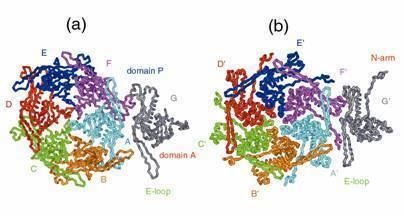Group Group I (dsDNA) Genus Lambdalikevirus Order Caudovirales | Family Siphoviridae Rank Species | |
 | ||
Similar Caudovirales, Enterobacteria phage P22, Siphoviridae, Bacillus phage phi29, Podoviridae | ||
Angry video game nerd 134 97 hk97
HK97 is a bacterial virus, bacteriophage, known to infect Escherichia coli and related bacteria. It is named for the site of its isolation (Hong Kong). Like lambda phage and other lambdoid phages, HK97 has a double-stranded DNA genome.
Contents
97 hk97 snes
Assembly and maturation
The capsid protein of HK97, gp5, cross-links upon maturation to form a concatenated chain-mail like structure. The bacteriophage undergoes a maturation process upon DNA packaging during which it expands by nearly 5 nm and changes from spherically symmetrical to icosahedrally symmetrical.
The HK97 assembly pathway begins with self-assembly of the capsid protein, gp5, into pentamers and hexamers. A protease, gp4, cleaves gp5 at its N-terminus. Attachment of a portal protein, gp3, coupled with conformational changes leads to formation of a prohead or procapsid structure. Further conformational changes and crosslinking of gp5 monomers comprise further capsid maturation and lead to formation of a mature phage head. Unlike most tailed viruses a scaffolding protein is not required for capsid assembly. However, studies on the effects of deleting the delta domain , or parts of it, indicates that it is essential for assembly.
